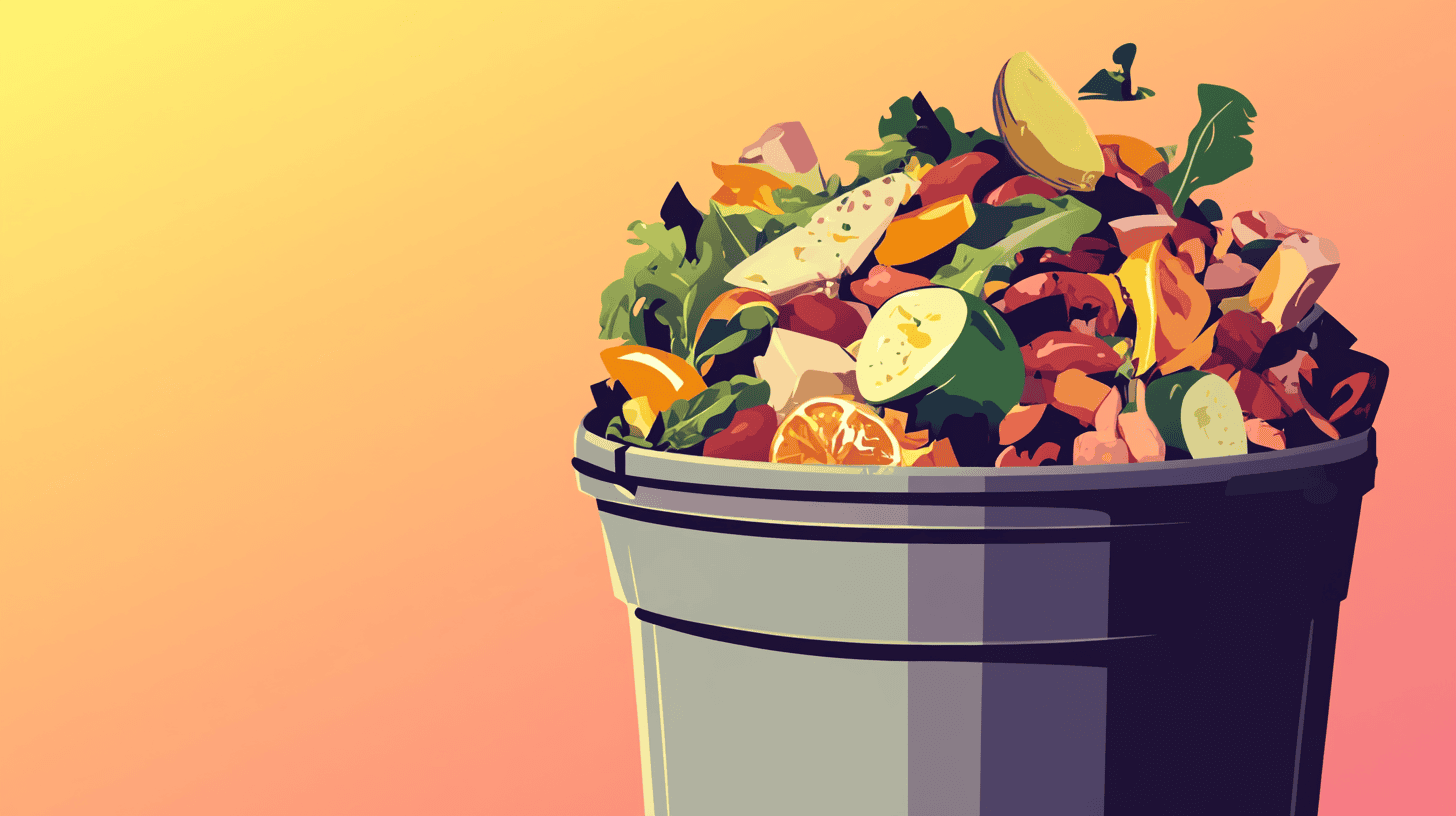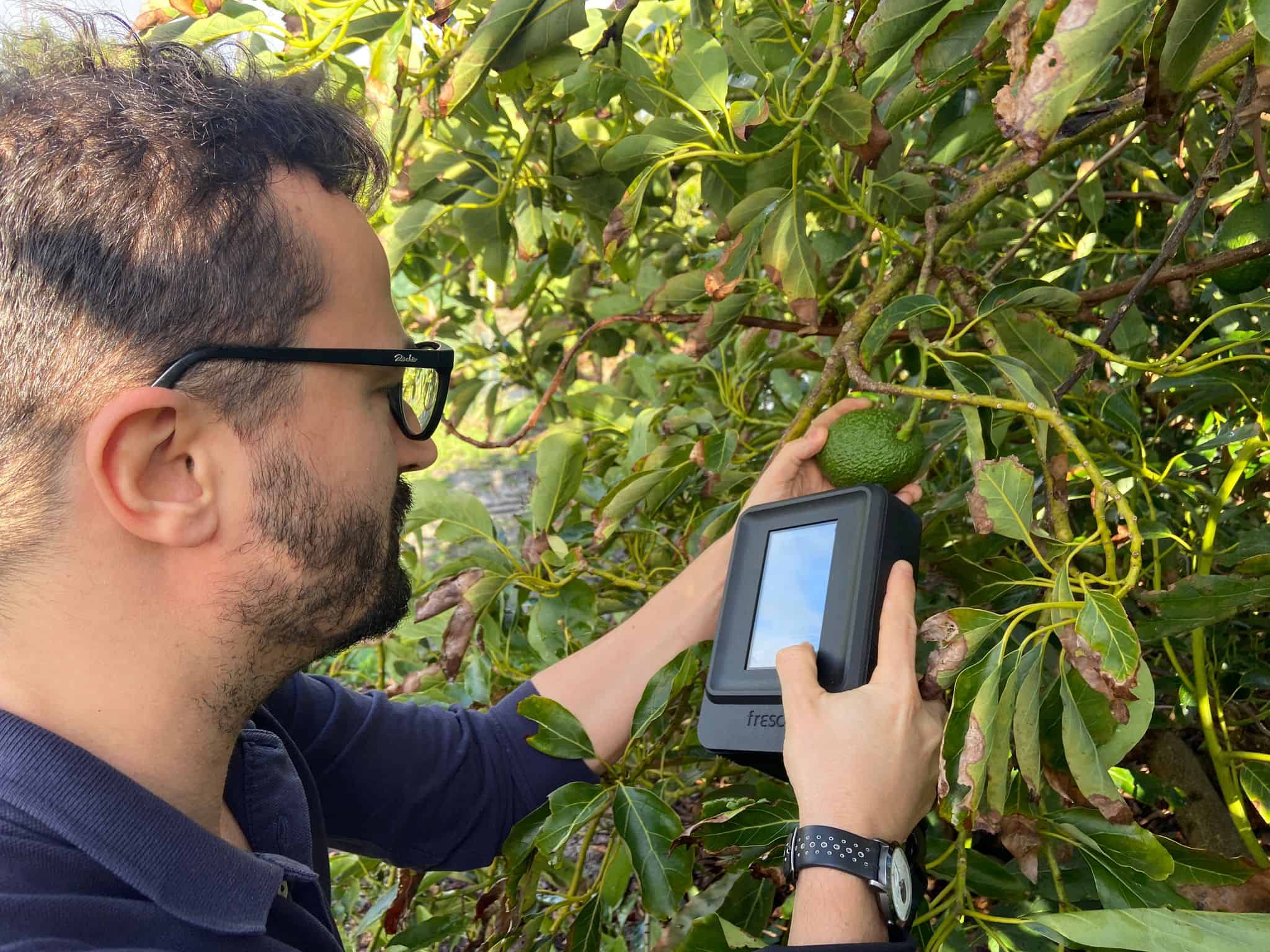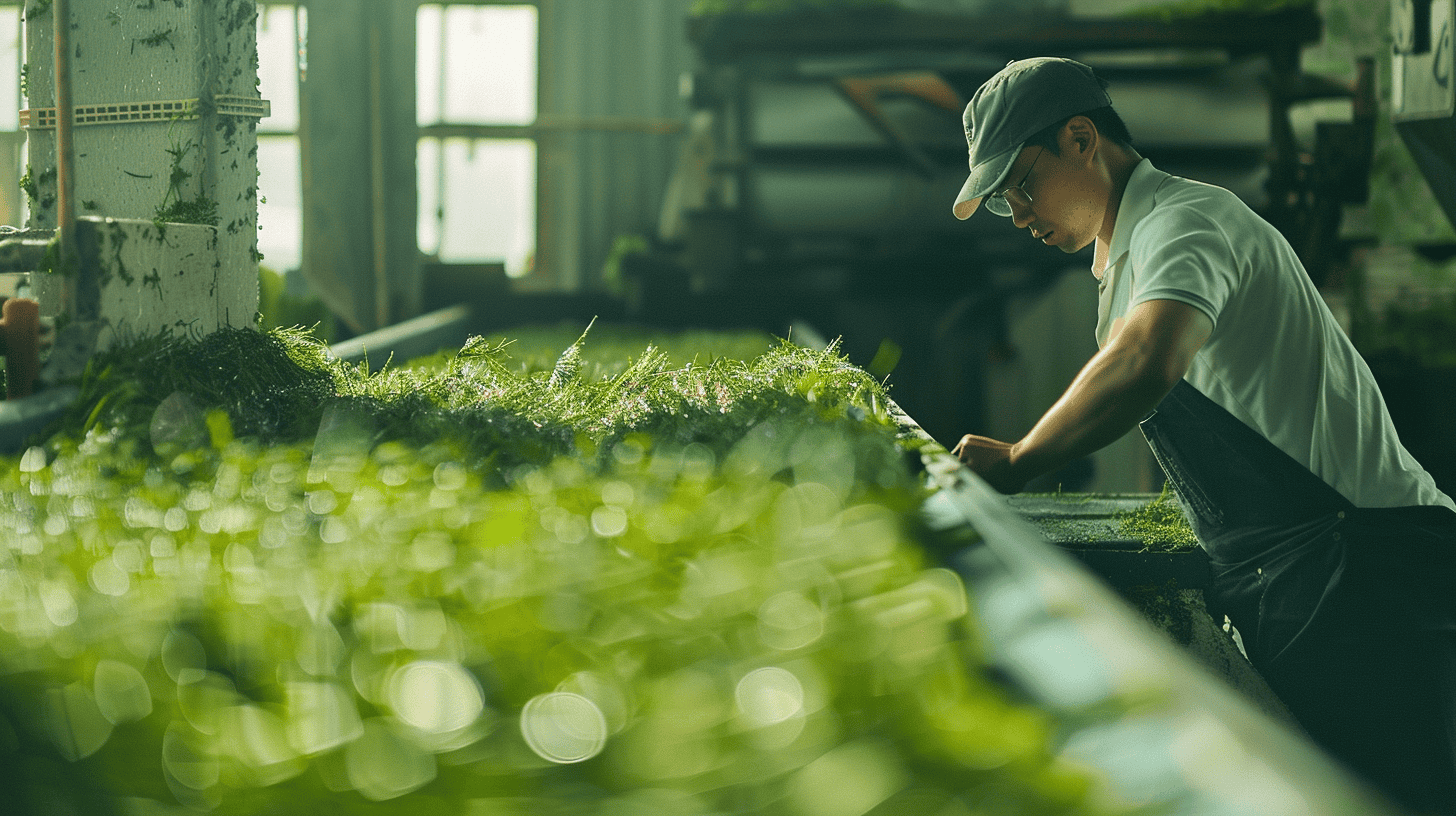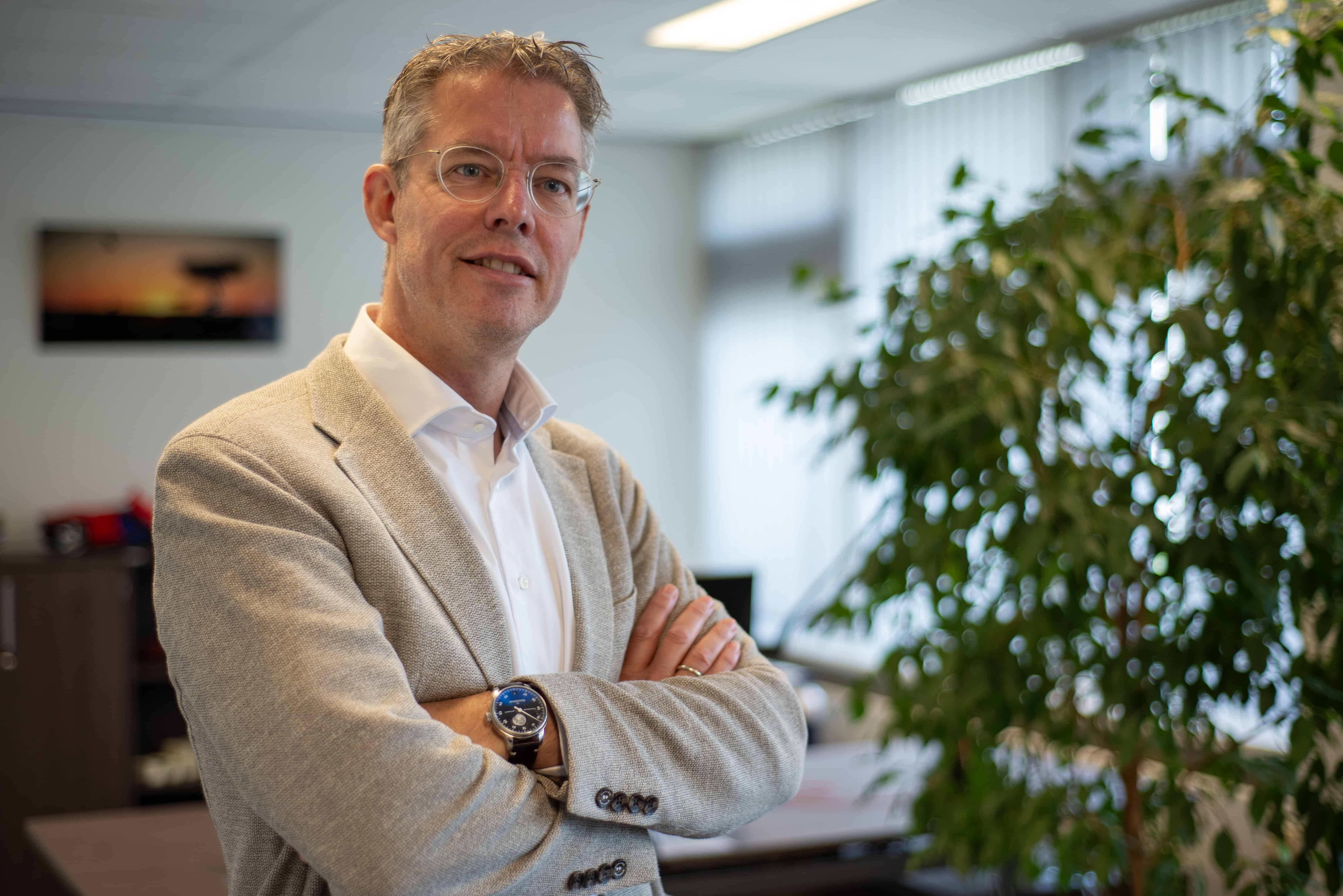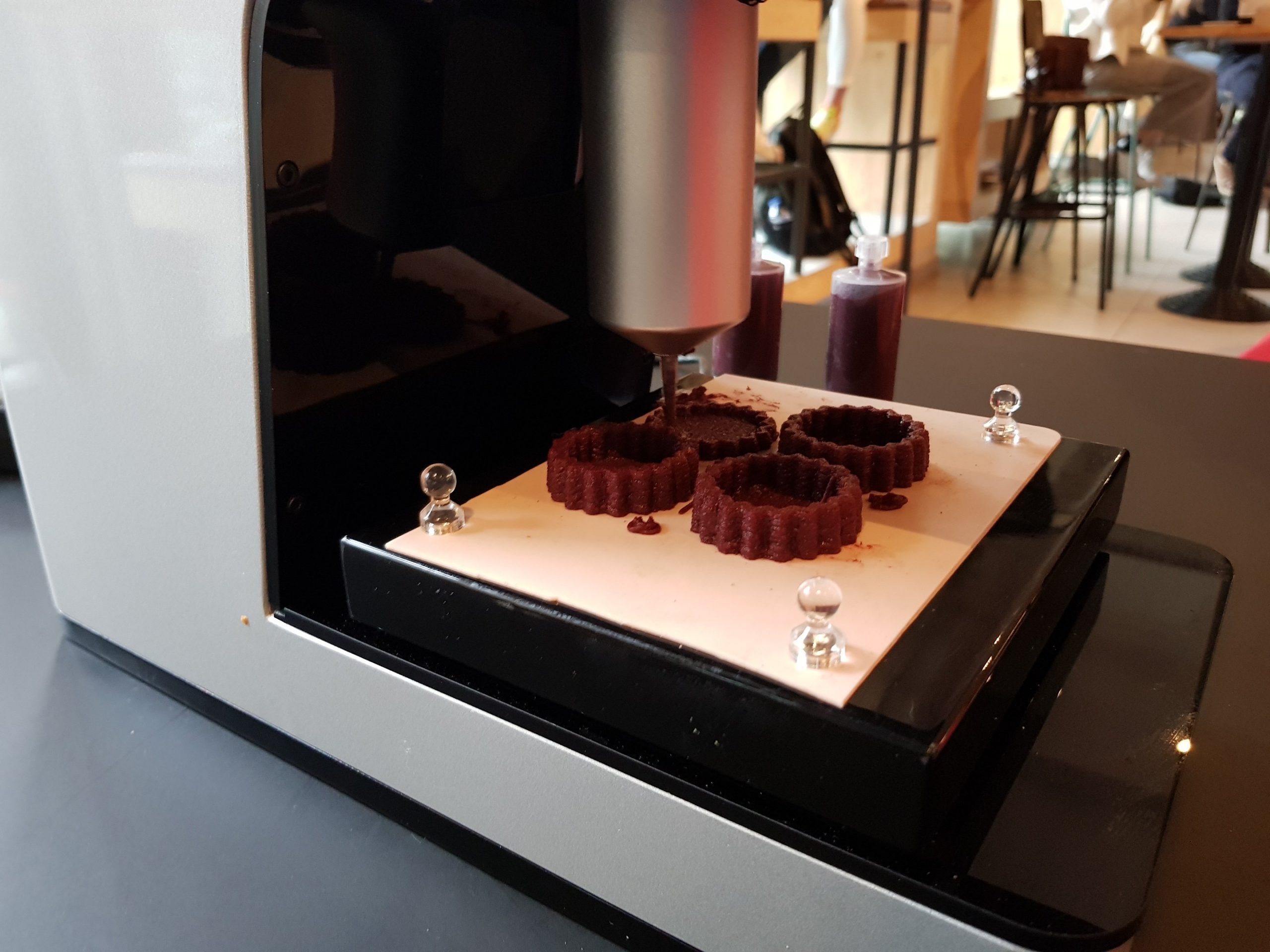
“Giving food waste a second taste.” That is Elzelinde van Doleweerd and Vita Broeken’s mission. With their company Upprinting Food, the industrial design students at Eindhoven University of Technology (TU/e) reuse food which is normally thrown away. They use a 3D printer to make decorative and edible elements for meals. “We throw away one third of the food we produce. This is how we plan to to reduce that,” says van Doleweerd.
A lot of bread is thrown away in the Netherlands. That’s why the students use this as a basis for their pulp. A 3D printer uses it to make edible shapes. “We also use a lot of (root) vegetables or fruit”, says Van Doleweerd. Too often this end up in the trash because ‘it doesn’t look good anymore,’ even though it’s still edible. “We dry the bread, and that leaves us with a kind of powder. That is what solidifies the vegetable or fruit pulp,” she explains. “Once the oven trays have been printed, this is then baked and dried. That way they have a longer shelf life.”
The pulp is fed into a syringe in the 3D printer. The machine builds up a shape layer by layer using a small needle. This means that the pulp should not be too thick or too thin. The women experiment with ingredients a great deal. To do this, they collect food leftovers from the Albert Heijn supermarket in Eindhoven. “We never know in advance what we will get, but there are so many options we are always able to make something out of it all.”
Restaurants as a starting point
Although supermarkets have huge amounts of surplus leftovers, the students are now focused entirely on restaurants. Hospitality companies can rent or buy a 3D printer. This allows them to process their own leftovers back into meals. Last week, the students gave a presentation to restaurant owners and other interested parties at the Hubble Community Café. The response was very positive. The attendees indicated that a lot of food ends up in the trash, even though it could still be used like this. However, there were some practical concerns when it came to the user-friendliness of the printers.
[youtube https://www.youtube.com/watch?v=qU3i2yhTKoU]
In order to see how the printer could work in a restaurant, the students tested the process at the Karperdonkse Hoeve restaurant in Eindhoven. “Customers reacted very positively,” says Ingrid van Eeghem, owner of the Karperdonkse Hoeve. “A company that came to eat with us even wanted to have its own logo printed off.” According to her, the chefs were constantly trying out new recipes in addition to designing new styles. “It’s very interesting to see how many of your own leftovers you can still use,” she says. “We really have thrown out considerably less food.” Moreover, it also made for a very nice atmosphere between employees and their customers. “It wasn’t just the people in the kitchen who were working with the printer, the front-house staff were too,” she explains. “They kept the printer running or explained how it worked to customers.”
Interest worldwide
The goal of Upprinting Food will have been achieved when restaurants use the printer in this way. “The most important thing for us, is for restaurants to see what they can do with their own leftover food.” The designers are not only looking at the Netherlands, but also at other countries. “We went to Beijing to attend the Design Week. We worked with rice as the basis then, because that’s the biggest leftover product over there,” says Van Doleweerd. “Restaurant owners reacted very enthusiastically there as well.”
Making a contribution towards the reduction of food waste is also an important personal goal for the students. “Combining sustainability with new technology provides interesting solutions,” says Van Doleweerd. This concept started as a project at university, but in the space of six months it has grown into a company. “We participated in an accelerator program through Design Forum in order to actually bring the idea to the market,” Broeken explains. Furthermore, the students will be able to further develop the company via TU/e innovation Space, a community where the university facilitates start-ups and student teams in the initial phases of their concepts.
Raising awareness is important
Students would like to look beyond restaurants in the future. “For example, supermarkets waste a tremendous amount of food,” Van Doleweerd states. If the students are able to reduce this wastage, that would lead to major changes in the Netherlands. “We first have to look into the development of 3D printers.” Even though raising awareness is the most important aspect in their opinion. “People at home also need to take a good look at how much food they throw away and what they might still be able to do with it. Our 3D printers remind us to think about that.”



